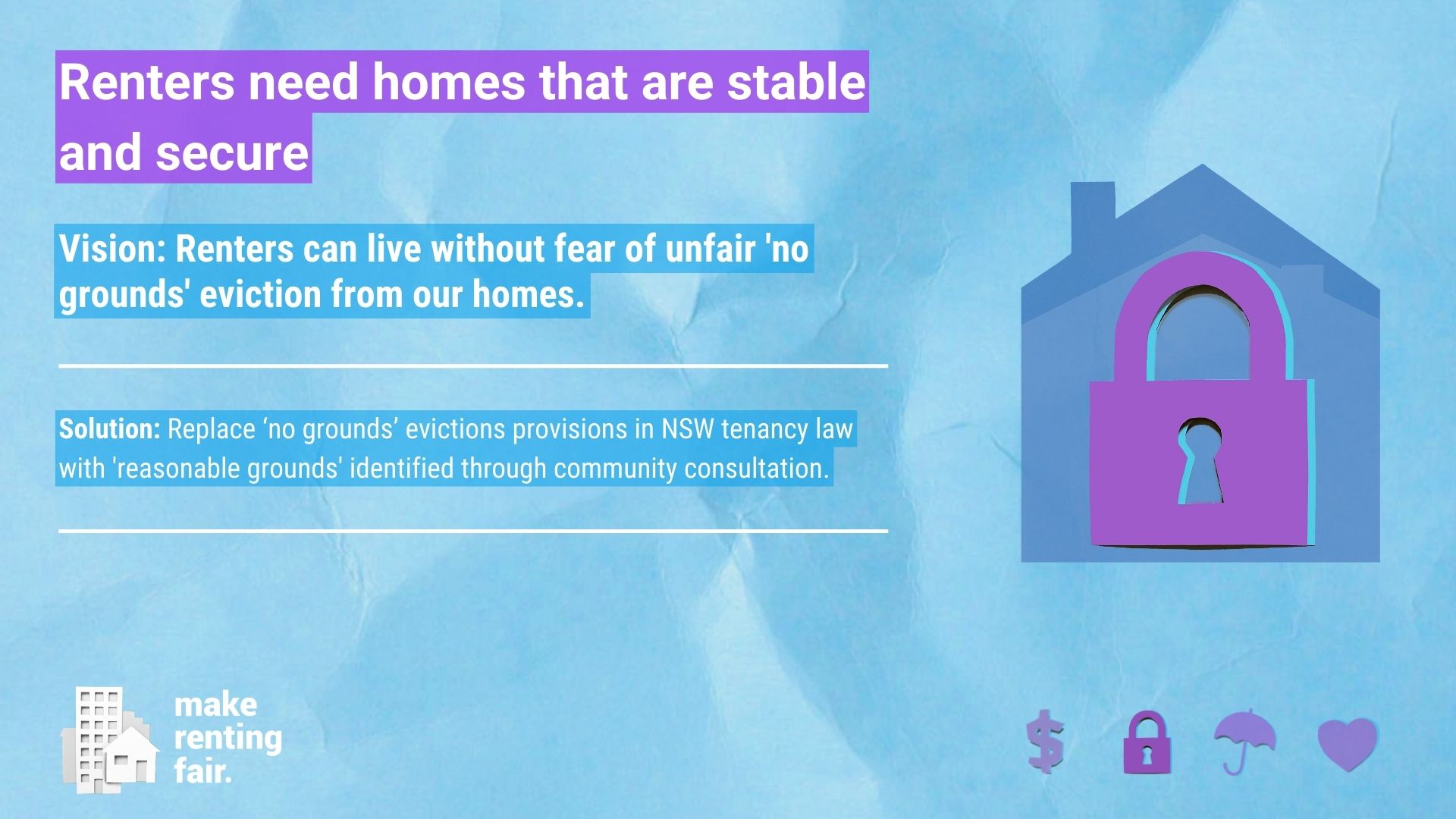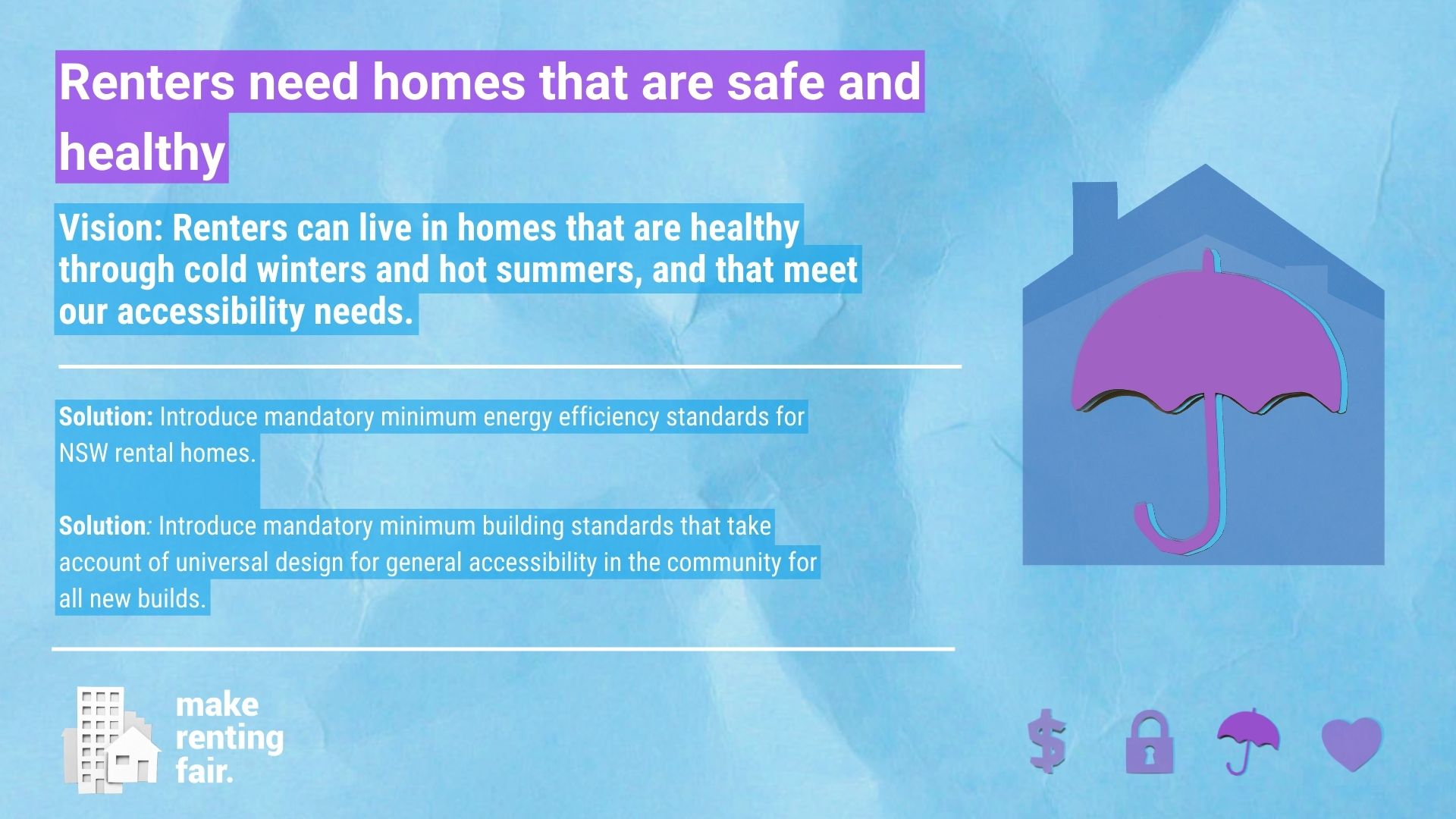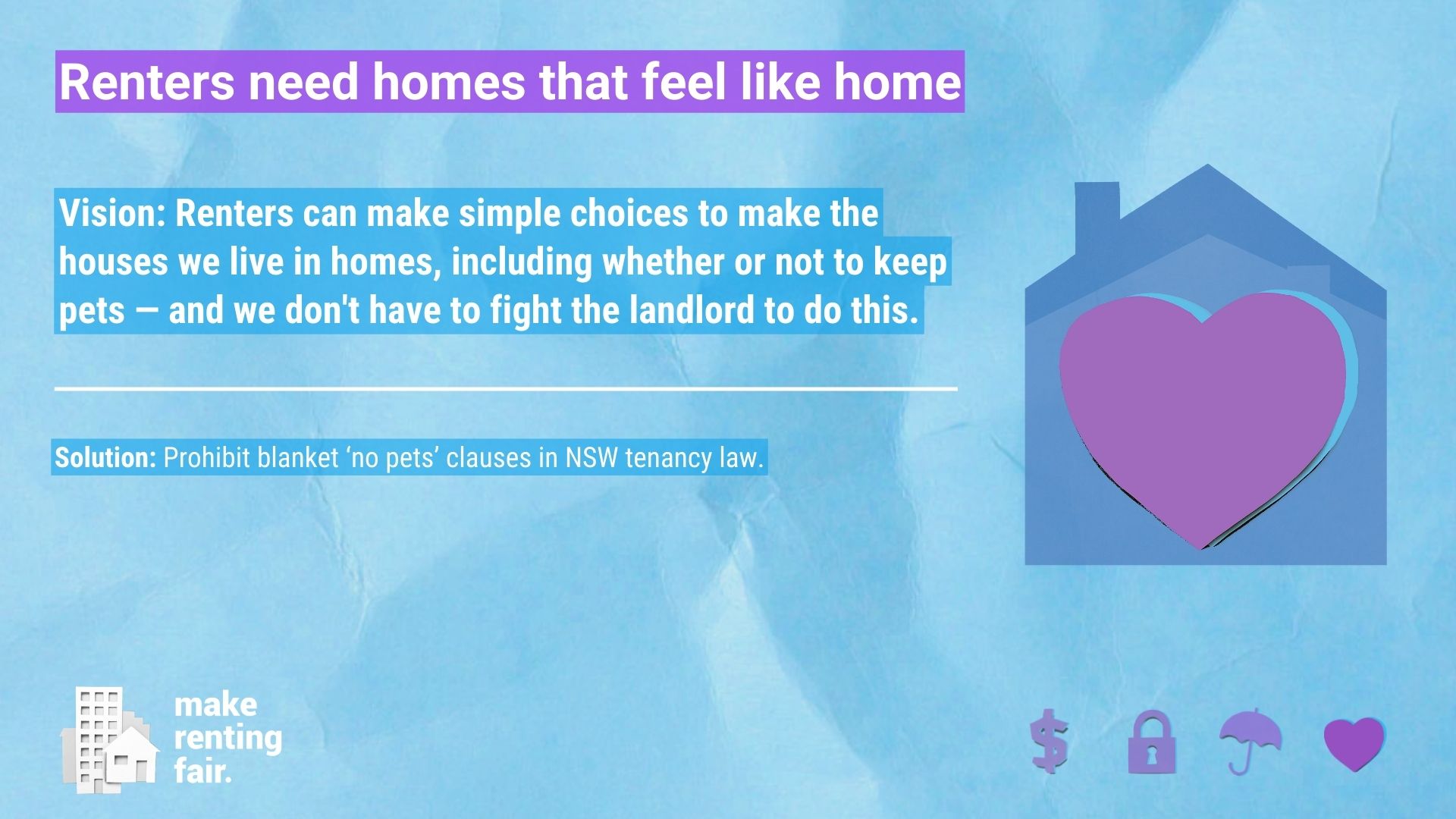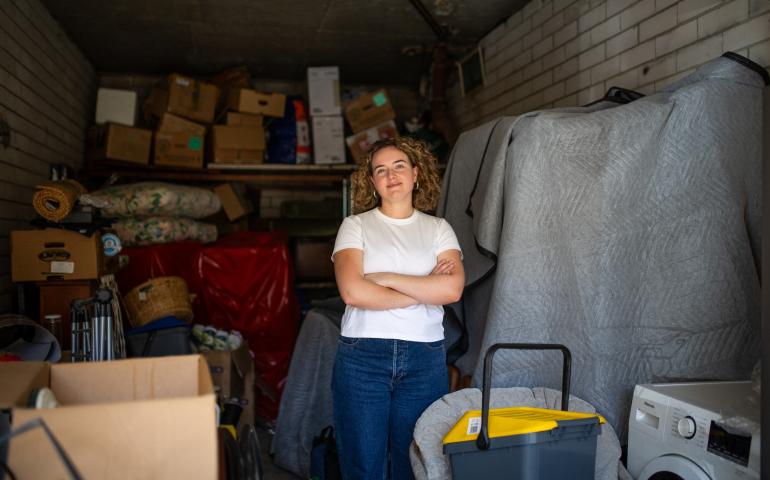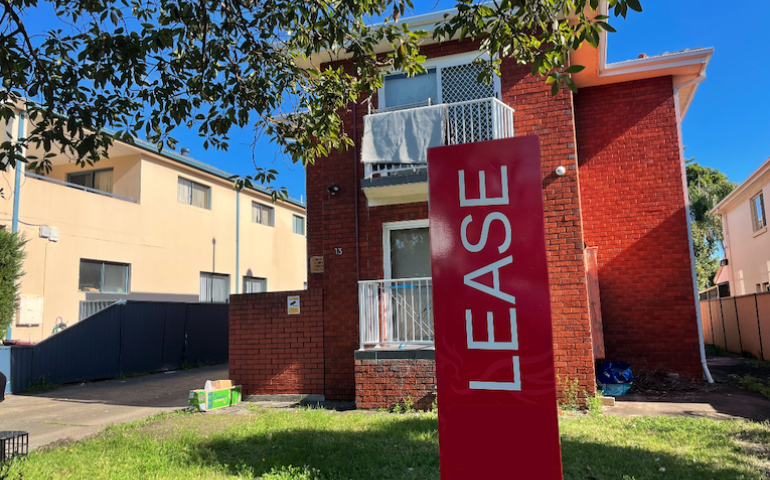Mythbusting common objections
There are some common objections that people – MPs, other members of the public, and even other renters – may raise when you discuss renting issues with them and advocate for the Make Renting Fair campaign’s proposed solutions to the rental crisis.
Here is some information you might need to help you respond to those objections, by myth-busting some common misconceptions about how the renting system works.
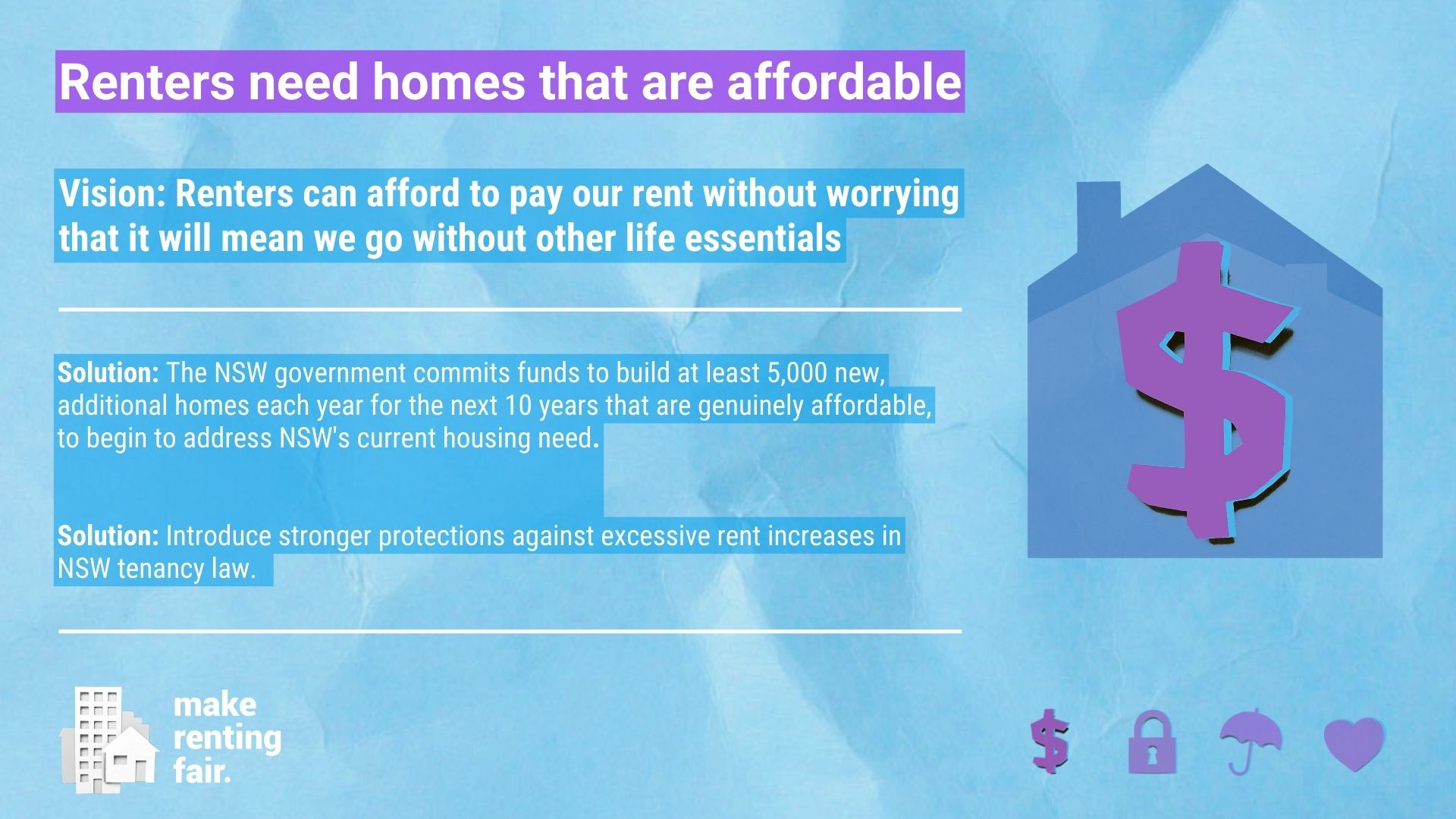
Investment in public and community housing
Objection: shouldn’t the market provide rental housing instead of the Government?
The market is clearly failing to provide adequate rental housing to meet the needs in the community. Rental vacancy rates are the lowest they have ever been on record, at 0.8% nationally, and rent prices have been increasing very rapidly. This is leaving increasing numbers of renters unable to secure a home. Any robust housing system needs a portion of the rental housing to be provided by the Government to ensure there is a safety net for those locked out of the private rental market.
Objection: how much would this cost?
Building adequate public and community housing would involve significant investment from the NSW Government, however the costs to the government of not addressing the housing and homelessness crisis are extremely high. Ensuring there is adequate social housing to meet community needs can prevent many other large costs down the track.
Objection: why are you focusing on housing for the extremely low-income people that live in social housing, and not everyone else, such as those struggling in the private rental market?
An adequate supply of good-quality social housing creates a buffer, with flow-on effects on the private rental market, such as downward pressure on rent prices and upward pressure on standards. Genuine investment in public and community housing would complement our second rental affordability ask: to introduce fair limits on rent increases.
Introducing fair limits on rent increases
Objection: What about the landlords who are facing costs due to an increase in interest rates?
Investing in property carries risk, just like any other type of investment. If landlords find themselves in a situation where they can no longer bear the risk of the investment they have chosen, then they have the option of selling the property and investing their money elsewhere. Housing is an essential service that all people need, and renters should not lose access to that essential service as a result of another person’s poor investment decisions.
Ending ‘no grounds’ evictions
Objection: The ‘end of a fixed term’ is a reasonable grounds. Why isn’t getting rid of ‘no grounds’ during periodic tenancies (rolling leases) enough?
Continuing to allow 'no grounds' evictions at the end of fixed-term agreements leaves a loophole in place for landlords and real estate agents. A majority of renters (71%) currently experiencing ‘no grounds’ evictions receive these at the end of a fixed term tenancy. We have seen in other jurisdictions that landlords and their agents simply shift renters on to shorter fixed term tenancies to ensure they can continue evicting for no reason. Addressing the continuing lack of security renters face requires removing the ability for landlords to end tenancies without a genuine reason, including for those renters on fixed-term agreements.
For more discussion on why ‘end of a fixed term’ is not a reasonable ground see our blog End of fixed term evictions are unfair ‘no grounds’ evictions Part 1 and Part 2.
Objection: won't the landlord leave the market?
Research released in 2022 found no evidence that stronger protections for renters cause landlords to leave the market. The research did find that – regardless of tenancy reforms – there is a high rate of turnover as properties enter and leave the sector. This is because the Australian rental sector facilitates quick investing and disinvesting – which means that as properties churn in and out of rental, renters are then churned in and out of their homes.
If landlords do claim that stronger protections for renters will mean they will disinvest, this should actually be seen as a good thing: if speculative, incapable investors leave the sector, then this would make properties available for new owner-occupiers and/or more committed landlords (especially non-profit providers). Stronger protections for renters do not cause landlords to leave the market, but even if they did, this would not be a bad thing.
Objection: Isn't it the landlord's property and they should be able to do with it as they want?
Housing is an essential service. All people need a home. Landlords are given significant tax incentives and subsidies, and so there are some basic obligations that they should be required to meet if they are going to be profiting from providing this essential service.
Upgrading rental homes to make them healthy to live in
Objection: Won’t the cost of upgrades be passed through to the renter in higher rent?
Rent costs are not tied to the costs of maintaining a property: landlords already charge as much in rent as they are able to. If certain upgrades become required across the board, this just creates a more equal playing field between different rental properties.
Objection: Why not just provide subsidies or support to help landlords retrofit and upgrade properties? Why do we need mandatory standards for energy efficiency?
Financial incentives for landlords have so far failed to effectively encourage landlords to improve energy efficiency of rental properties. Landlords don’t just fail to invest in energy efficiency, but even where partial or full subsidies are offered fail to take these up. The best way to address this is to require properties to meet mandatory minimum energy efficiency standards.
Ensuring newly built homes meet renters’ accessibility needs
Objection: Won’t the cost of upgrades be passed through to the renter in higher rent?
Similar response to above. Additionally, if homes are built from the start with universal design principles, this is far cheaper than making renovations over time to meet changing accessibility requirements.
Objection: People with disabilities are a small, niche group – isn’t the market already delivering?
No. There are nowhere near enough accessible rental homes to meet the needs of people with disabilities. Further, accessible homes benefit far more than a small niche group of people with disabilities. Anyone can become disabled at any point in their life, especially as we age. Accessible homes can also help other groups, such as parents with babies.
Keeping pets in rental homes
Objection: What about the damage caused by pets?
Renters pay a bond to cover any potential damage to property, whether this damage is caused by animals or humans. The current bond system is already effective at covering the majority of risk at the end of the agreement. In 2021-22 63% of bonds were returned in full to tenants, and only 12.9% of bonds claimed in full by the landlord. In the rare cases where damage to property is the renter’s fault and exceeds the bond there are already processes by which landlords can recoup these costs.
Objection: What about pet bonds?
For the reasons above, there is no reason why landlords should be able to request an extra bond from renters with pets.
Objection: What about landlords who have animal allergies?
In most cases, the landlord themself never actually enters the property during a tenancy, and the property can be thoroughly cleaned at the end of the tenancy. So, a landlord’s allergy shouldn’t be impacted by a renter keeping a pet at their home. In some rare cases, the landlord may be impacted, such as where the rental is attached to the landlord’s own residence, or where the allergies are extremely severe. Should the law change to make it easier for renters to keep pets, there will be provisions in place to allow landlords to refuse consent for a renter to keep a pet if the landlord would suffer hardship as a result of an animal living in the property – which would cover these cases.

